- Introduction to Blockchain IoT
- Key Market Insights
- How Does Blockchain in IoT Work?
- Benefits of Blockchain in IoT:
- Blockchain in IoT Use Cases
- How to Integrate Blockchain in IoT
- Essential Tech-Stack Needed for Blockchain IoT Integration
- Top Examples Of Blockchain In IoT
- Conclusion
- Frequently Asked Questions
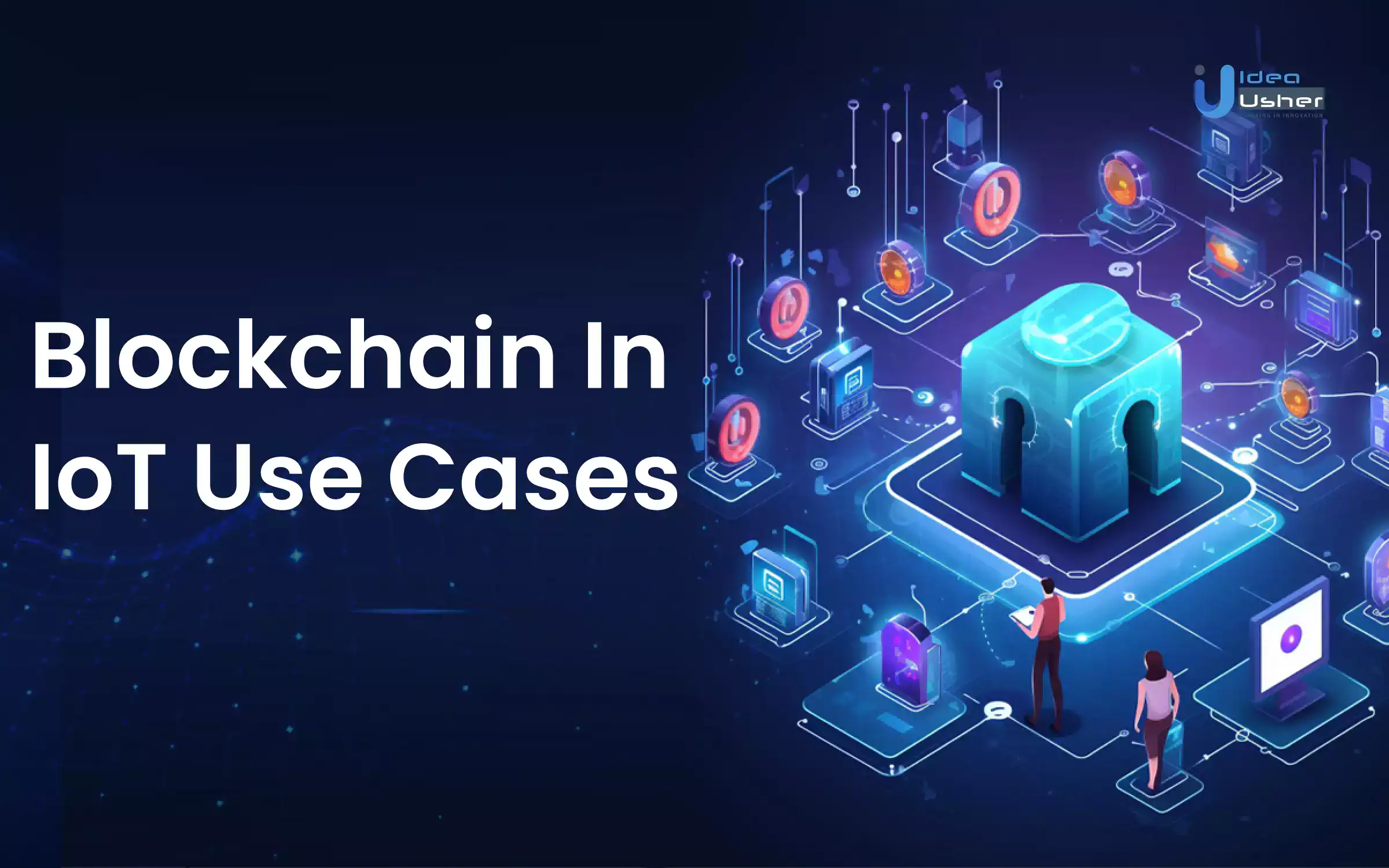
In a world defined by data and connectivity, the fusion of Blockchain technology and the Internet of Things (IoT) has ignited a transformative wave across industries. Blockchain’s secure, decentralized ledger combined with IoT’s real-time data collection capabilities offers a paradigm shift in how we manage information and assets.
This blog explores the remarkable use cases where Blockchain and IoT converge, reshaping supply chains, healthcare, energy management, and more.
Join us on this journey as we delve into the boundless possibilities that Blockchain IoT integration presents, promising transparency, security, and efficiency for a smarter, more connected future.
- Introduction to Blockchain IoT
- Key Market Insights
- How Does Blockchain in IoT Work?
- Benefits of Blockchain in IoT:
- Blockchain in IoT Use Cases
- How to Integrate Blockchain in IoT
- Essential Tech-Stack Needed for Blockchain IoT Integration
- Top Examples Of Blockchain In IoT
- Conclusion
- Frequently Asked Questions
Introduction to Blockchain IoT
To comprehend the intricacies of Blockchain IoT, let’s begin with a fundamental understanding of both blockchain and IoT.
Blockchain, often termed the “digital ledger,” is a distributed and immutable ledger technology. It operates on a decentralized network, thus, ensuring that no single entity can manipulate or control the data it contains. Each transaction is securely recorded in a block linked to the previous one, consequently creating an unbroken chain of data.
On the other hand, the Internet of Things is a vast network of interconnected physical devices, such as sensors, cameras, and appliances. These devices collect and exchange data, thus, enabling them to make informed decisions and automate processes.
Key Market Insights
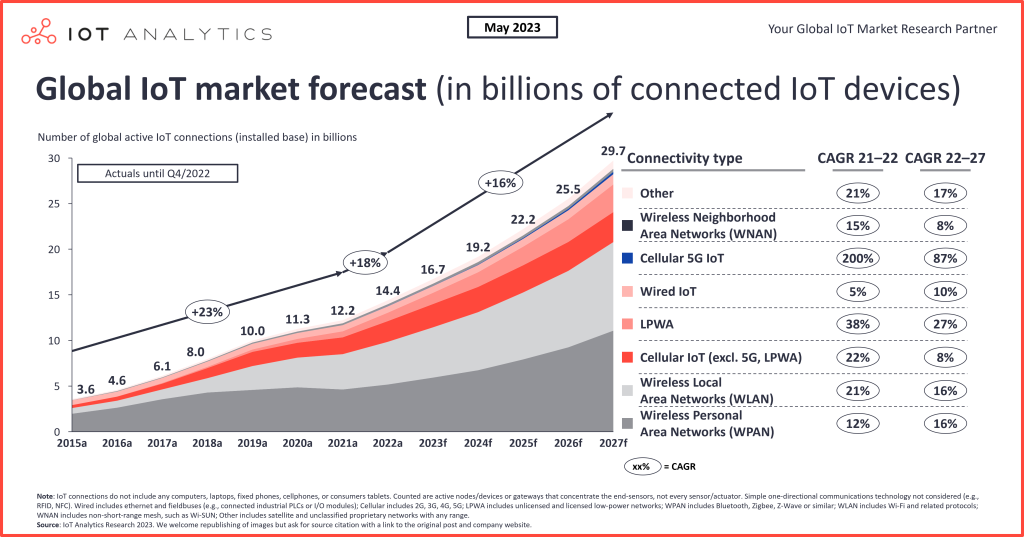
The growth of blockchain technology has been nothing short of remarkable, especially when considering the ever-expanding Internet of Things (IoT) landscape. According to the latest IoT Analytics “State of IoT—Spring 2023” report, global IoT connections surged by an impressive 18% in 2022, reaching a staggering 14.3 billion active IoT endpoints. Looking ahead to 2023, the forecast remains promising, with IoT Analytics projecting a 16% growth, bringing the global number of connected IoT devices to 16.7 billion active endpoints. While this growth rate is slightly lower than the previous year, it underscores the enduring potential of blockchain technology, thus, demonstrating its resilience and its integral role in the continuous expansion of the IoT ecosystem. As we move forward, blockchain is poised to play a pivotal role in securing as well as facilitating the ever-growing number of IoT connections for years to come.
How Does Blockchain in IoT Work?
The fusion of blockchain and IoT involves the integration of blockchain’s secure and transparent ledger with IoT’s data-gathering capabilities. This integration unlocks numerous benefits, including enhanced security, data integrity, as well as trustworthiness.
Now, let’s take a closer look at how Blockchain IoT works in practice:
1. Data Collection and Sensing
At the heart of IoT is the collection of data from the physical world. IoT devices, equipped with sensors, cameras, or other data-gathering mechanisms, interact with their environment to collect a wide range of information. This data can vary significantly depending on the application. For instance, in a smart home, sensors might capture temperature and humidity readings, while in logistics, GPS devices could provide real-time location information.
The key here is that IoT devices are constantly collecting data from their surroundings, and this data serves as the foundation for the subsequent steps in the Blockchain IoT process.
2. Data Encryption
Once the IoT devices have collected the data, the next critical step is to ensure its security and confidentiality. To achieve this, the data is encrypted using advanced cryptographic algorithms. Encryption transforms the raw data into a format that is nearly impossible for unauthorized parties to decipher.
By encrypting the data at its source, the integrity of the information is preserved throughout its journey from the IoT device to the blockchain network. This encryption is a vital security measure, thus preventing potential breaches and maintaining the privacy of sensitive data.
3. Data Transmission
After encryption, the data is ready for transmission to the blockchain network. This transmission can occur through various communication protocols, such as Wi-Fi, cellular networks, or dedicated IoT networks. Regardless of the method used, the encrypted data is securely sent to the blockchain.
Each piece of data is bundled into a transaction and added to a block. A block is a group of transactions that are aggregated together before being added to the blockchain. Importantly, each transaction in the block includes a timestamp and a unique identifier, which help maintain the chronological order of data as well as prevent double-spending or fraudulent entries.
4. Consensus Mechanism
Blockchain IoT relies on a consensus mechanism to validate and add new blocks to the blockchain. Common consensus mechanisms include Proof of Work (PoW) and Proof of Stake (PoS). These mechanisms ensure that only legitimate and verified transactions are recorded on the blockchain.
In PoW, participants, often referred to as miners, must solve complex mathematical puzzles to add a new block. This process requires computational power as well as ensures that participants have a vested interest in maintaining the integrity of the blockchain. PoS, on the other hand, relies on validators who are chosen to create new blocks based on the amount of cryptocurrency they hold and are willing to “stake” as collateral.
The consensus mechanism is a critical component of Blockchain IoT, as it guarantees the reliability as well as trustworthiness of the data stored on the blockchain
5. Immutable Ledger
Once a block of transactions is validated and added to the blockchain, the data within it becomes an immutable part of the ledger. “Immutable” means that the information is permanent, tamper-proof, as well as transparent. This quality is fundamental to the security and trustworthiness of the system.
Any attempt to alter or delete data from the blockchain would require an overwhelming majority of network participants to agree, thus, making it virtually impossible to compromise the integrity of the data. This immutability is a core feature that distinguishes blockchain from traditional centralized databases.
6. Data Retrieval and Analysis
Authorized users, such as stakeholders, analysts, or system administrators, can access the data stored on the blockchain for various purposes, including analytics, decision-making, or auditing. The blockchain ensures the integrity and security of the data, thus providing a high level of trust in the insights derived from it.
Moreover, the transparent nature of the blockchain allows users to trace the origin and history of each piece of data, consequently, enhancing transparency as well as accountability in various applications, such as supply chain management and healthcare.
Benefits of Blockchain in IoT:
- Enhanced Security: Blockchain’s decentralized nature eliminates the presence of a single point of failure, making it highly resistant to hacking and cyberattacks. Every device on the network validates data, making it extremely difficult to tamper with information.
- Improved Transparency: All data transactions on a blockchain are visible to authorized participants, providing a clear audit trail and fostering trust within the network. This transparency allows for easier identification of unauthorized access attempts or data manipulation.
- Streamlined Data Management: Blockchain facilitates secure data exchange between devices and platforms. This eliminates the need for centralized servers, reducing costs and simplifying data management across complex IoT networks.
Streamlined Data Management: Blockchain facilitates secure data exchange between devices and platforms. This eliminates the need for centralized servers, reducing costs and simplifying data management across complex IoT networks. - Automated Processes: Smart contracts, self-executing contracts on the blockchain, can automate processes and transactions within the IoT ecosystem. This allows for efficient and reliable data exchange without manual intervention, improving overall network efficiency.
- Enhanced Traceability: Blockchain empowers real-time tracking of assets and goods in an IoT network. This can be invaluable for supply chain management, ensuring product authenticity and preventing counterfeiting throughout the entire lifecycle.
Blockchain in IoT Use Cases
1. Supply Chain and Logistics: Golden State Foods
Supply chains involve multiple stakeholders, thus, making it challenging to maintain transparency as well as traceability. The integration of blockchain and IoT sensors in supply chain and logistics management brings several benefits. IoT sensors, such as motion sensors, GPS, temperature sensors, and vehicle information devices, collect real-time data throughout the shipment process. This data is then securely stored on a blockchain, thus, ensuring its immutability and accessibility to relevant parties through smart contracts.
Example:
Golden State Foods (GSF), a major food supplier serving a vast number of restaurants, collaborates with IBM to optimize its supply chain. By implementing blockchain and IoT, GSF enhances accountability and transparency. Sensors on shipments monitor conditions like temperature, ensuring that food products are transported under suitable conditions. Stakeholders, including suppliers and distributors, can access this data in real time, improving decision-making and preventing issues before they become serious problems.
2. Automotive Industry: NetObjex
The automotive industry is evolving rapidly, with IoT sensors playing a crucial role in creating fully automated vehicles and enhancing various aspects of transportation. Blockchain and IoT integration in the automotive sector enables secure and efficient processes like automated fuel payments, autonomous driving, smart parking, and traffic control.
Example:
NetObjex, a company specializing in IoT solutions, has developed a smart parking solution using blockchain and IoT. This technology simplifies parking by helping drivers find available spaces and automating payments through cryptocurrency wallets. IoT sensors track parking duration, and billing occurs seamlessly through blockchain, offering convenience and efficiency for drivers and parking operators.
3. Smart Homes: Telstra
Smart homes rely on IoT-enabled devices to enhance convenience and security. However, traditional centralized data exchange in smart homes raises concerns about data security and ownership. Blockchain can resolve these issues by decentralizing data management and ensuring data integrity.
Example:
Telstra, an Australian telecommunications and media company, has introduced blockchain and biometric security to improve smart home security. They store sensitive user data, such as biometrics, voice recognition, and facial recognition, on a blockchain. This ensures data cannot be tampered with and is only accessible to authorized individuals, enhancing the overall security and privacy of smart home systems.
4. Sharing Economy: Slock.it
The sharing economy involves peer-to-peer sharing of assets and services, and blockchain technology can make this process more secure, transparent, and efficient. By utilizing blockchain and IoT, sharing economy applications can create decentralized networks, eliminating the need for intermediaries.
Example:
Slock.it is a blockchain-based platform that allows IoT-enabled objects to be shared securely. They are developing a Universal Sharing Network (USN), where any object can be rented, sold, or shared without intermediaries. Smart contracts control access to information, ensuring data privacy and transparency. This innovation has the potential to disrupt sharing economy businesses, making sharing goods more accessible and secure for users.
5. Pharmacy Industry: Mediledger
Counterfeit medicines pose a significant challenge in the pharmaceutical sector. The blockchain’s transparent and traceable nature can be leveraged to monitor the journey of pharmaceutical products from manufacturing to distribution, reducing the risk of counterfeit drugs entering the supply chain.
Example:
Mediledger is a blockchain-based solution designed to track the legal ownership of prescription medicines. It ensures transparency and traceability by storing data on a distributed ledger accessible to manufacturers, wholesalers, dispensers, and end customers. Mediledger simplifies payment processes, controls user access, and safeguards the pharmaceutical supply chain against counterfeit drugs, improving patient safety.
6. Agriculture: Pavo
The agricultural industry faces the challenge of meeting the growing demand for food while minimizing environmental impact. Blockchain and IoT can enhance the transparency and efficiency of the food supply chain by installing IoT sensors on farms to collect data and securely store it on a blockchain.
Example:
Pavo is a blockchain IoT use case that brings transparency to farming. IoT hardware devices installed on farms collect data and store it on the blockchain. This data empowers farmers to make informed decisions about farming practices, and it allows distributors, retailers, and consumers to make informed choices about purchasing crops or food items. Pavo’s marketplace enables farmers to presell crops through smart contracts, providing financial stability and improving the overall agricultural supply chain.
7. Water Management: Aquai and “Drone on the Volga”
Efficient water management is crucial to conserving resources and preventing wastage. IoT sensors combined with blockchain technology can monitor water usage and contamination levels, leading to more sustainable practices.
Example:
Aqua has developed the Puck, a smart water sensor that tracks water usage and detects leaks, while blockchain technology stores and secures the data. Additionally, a project called “Drone on the Volga” uses a drone equipped with IoT sensors and blockchain technology to measure water contamination levels autonomously. By collecting real-time data and recording it on the Ethereum blockchain, scientists can identify the source of contamination and take necessary actions to protect water resources.
How to Integrate Blockchain in IoT
The integration of Blockchain with the Internet of Things (IoT) has gained immense traction across industries. This powerful fusion promises not only enhanced security but also transparency and efficiency. If you’re considering embarking on a Blockchain IoT integration journey, here are the essential steps to guide you through the process.
1. Define Your Objectives
Before diving headfirst into Blockchain IoT integration, it’s crucial to clearly define your objectives. What specific challenges are you trying to address? Whether it’s improving security, enhancing transparency, or streamlining processes, having a clear vision will help you set the right course.
2. Choose the Right Blockchain Platform
Selecting the appropriate Blockchain platform is a critical decision. Depending on your requirements, you may opt for public, private, or consortium Blockchains. Ethereum, Hyperledger Fabric, and Corda are popular choices. Consider factors like scalability, consensus mechanisms, and smart contract capabilities when making your selection.
3. Identify IoT Devices and Sensors
Next, identify the IoT devices and sensors that will collect and transmit data to the Blockchain. These devices should align with your objectives. For example, in a supply chain scenario, you might use temperature sensors to monitor the transportation of perishable goods.
4. Develop Smart Contracts
Smart contracts are self-executing contracts with predefined rules. They automate processes and transactions on the Blockchain. Work with developers to create smart contracts that govern the interactions between IoT devices and the Blockchain. Ensure these contracts are efficient and secure.
5. Secure Data Transmission
Security is paramount in IoT integration. Implement robust encryption methods in order to secure data transmission between IoT devices and the Blockchain. This step is essential in order to prevent unauthorized access and data tampering.
6. Integration Testing
Before deploying your Blockchain IoT solution in a real-world environment, conduct thorough integration testing. Ensure that IoT devices are correctly interfacing with the Blockchain and that smart contracts execute as expected. Moreover, identify and address any glitches or vulnerabilities.
7. Regulatory Compliance
Be aware of the regulatory landscape in your industry and geographic region. Blockchain and IoT may have specific legal as well as compliance requirements that you must adhere to. Seek legal counsel in order to ensure your solution complies with all relevant regulations.
8. Deployment and Scaling
Once testing is successful and regulatory compliance is assured, it’s time to deploy your Blockchain IoT solution. Monitor its performance as well as scalability as data volume and device connections increase. Be prepared to make necessary adjustments as your project grows.
9. Maintenance and Updates
Maintaining your Blockchain IoT integration is an ongoing process. Regularly update smart contracts, address security vulnerabilities, and stay informed about advances in both Blockchain and IoT technologies in order to ensure your solution remains effective and secure.
10. Continuous Improvement
As with any technology, there is always room for improvement. Continuously assess the impact of your Blockchain IoT integration on your business objectives as well as look for opportunities in order to enhance efficiency and security further.
Essential Tech-Stack Needed for Blockchain IoT Integration
Here, we’ll explore the essential components that make up the tech stack needed for seamless Blockchain IoT integration:
Blockchain Platform:
- Choose a Blockchain platform that aligns with your project’s requirements, such as Ethereum, Hyperledger Fabric, Corda, or others.
- Consider the platform’s scalability, consensus mechanisms, and support for smart contracts.
IoT Devices and Sensors:
- Identify and select IoT devices and sensors that are compatible with your chosen Blockchain platform.
- Ensure these devices are capable of securely transmitting data to the Blockchain.
Smart Contract Development:
- Develop smart contracts that define the rules and logic governing interactions between IoT devices and the Blockchain.
- Use programming languages such as Solidity (for Ethereum), Go (for Hyperledger Fabric), or Kotlin (for Corda) for smart contract development.
Data Encryption:
- Implement robust encryption methods to secure data transmission between IoT devices and the Blockchain.
- Utilize encryption standards like TLS/SSL to protect data in transit and asymmetric encryption for data at rest.
IoT Gateway:
- Deploy an IoT gateway that acts as an intermediary between IoT devices and the Blockchain.
- This gateway ensures data is formatted correctly and securely transmitted to the Blockchain.
Middleware:
- Incorporate middleware solutions to manage the communication between IoT devices, the IoT gateway, and the Blockchain.
- Middleware can handle data transformation, validation, and error handling.
Database:
- Integrate a database system for storing metadata and off-chain data related to IoT devices and transactions.
- Popular choices include MySQL, PostgreSQL, or NoSQL databases like MongoDB.
Identity and Access Management (IAM):
- Implement robust IAM solutions to manage user and device identities securely.
- Use protocols like OAuth, OpenID Connect, or custom IAM solutions to control access to the Blockchain.
Monitoring and Analytics:
- Deploy monitoring and analytics tools to gain insights into the performance and health of your Blockchain IoT system.
- Solutions like Prometheus, Grafana, or custom dashboards can provide valuable data.
Regulatory Compliance Tools:
- Utilize compliance and auditing tools to ensure your Blockchain IoT solution meets industry and regional regulatory requirements.
- These tools can help with documentation, compliance reporting, and auditing.
Development Frameworks and Libraries:
- Leverage development frameworks and libraries specific to your chosen Blockchain platform.
- These tools can simplify development tasks and accelerate the integration process.
Security Solutions:
- Employ security measures such as firewalls, intrusion detection systems, and regular vulnerability assessments to safeguard your Blockchain IoT infrastructure.
Scalability and Load Balancing:
- Implement mechanisms for horizontal scalability and load balancing to accommodate growing numbers of IoT devices and transactions.
Backup and Recovery:
- Establish a robust backup and recovery strategy to ensure data integrity and system availability in case of unexpected failures.
Top Examples Of Blockchain In IoT
Here are the top 5 examples of companies using blockchain in IoT:
1. Helium
Helium is a decentralized wireless network for IoT devices. It uses blockchain in order to incentivize people to host Helium nodes, which provide coverage for the network. Helium also uses blockchain to create a transparent and tamper-proof record of all data that is transmitted over the network.
2. Grid+
Grid+ is a company that uses blockchain to create a more efficient and sustainable energy grid. It allows consumers to buy as well as sell electricity directly to each other, without the need for a middleman. It also uses blockchain to track and manage renewable energy sources, such as solar and wind power.
3. IOTA
IOTA is a cryptocurrency that is specifically designed for IoT devices. It is lightweight and scalable, thus, making it ideal for use in IoT applications. IOTA is also using its blockchain to create a decentralized marketplace for IoT data.
4. IoTeX
IoTeX is a blockchain platform that is focused on IoT security and privacy. It provides a variety of tools and services that help developers create secure as well as scalable IoT applications. IoTeX is also working on a number of partnerships with IoT device manufacturers.
5. VeChain
VeChain is a blockchain platform that is focused on supply chain management. It uses blockchain to track as well as trace products from their origin to their destination. This helps to ensure that products are authentic and that they have been transported safely.
Conclusion
In conclusion, the marriage of Blockchain and the Internet of Things is ushering in a new era of innovation and efficiency. As we’ve explored in this blog, these technologies, when combined, offer a robust solution to some of the most pressing challenges across various industries. Whether it’s ensuring the integrity of supply chains, improving patient care in healthcare, or optimizing energy consumption, Blockchain IoT use cases are reshaping the way we interact with data, devices, and systems.
Are you prepared to revolutionize your business with the formidable combination of Blockchain and IoT? Our team of seasoned experts is ready to guide you through this transformative journey, leveraging their in-depth knowledge and experience in these cutting-edge technologies.
Don’t miss the opportunity to reshape your industry, enhance security, and boost efficiency. Reach out to us today and let’s embark on this journey of innovation together!
Frequently Asked Questions
Q: What are the key benefits of integrating Blockchain with IoT?
A: Integrating Blockchain with IoT offers enhanced security, transparency, as well as efficiency. It ensures data integrity, reduces fraud, and enables real-time tracking and automation of processes, consequently, making it a powerful solution for various industries.
Q: How does Blockchain IoT integration impact supply chain management?
A: Blockchain IoT integration revolutionizes supply chain management by providing end-to-end visibility as well as traceability. It helps prevent counterfeiting, reduces errors, and enables real-time monitoring of product movements, thus ensuring a more efficient and secure supply chain.
Q: Is Blockchain IoT integration suitable for small businesses and startups?
A: Yes, Blockchain IoT integration can benefit businesses of all sizes. Small businesses and startups can leverage these technologies in order to enhance data security, streamline operations, and gain a competitive edge by adopting scalable and cost-effective solutions.
Q: What are some notable challenges in implementing Blockchain IoT solutions?
A: Challenges include interoperability among various IoT devices and Blockchain platforms, thus, ensuring data privacy and compliance with regulations, as well as addressing scalability issues as the number of connected devices grows.




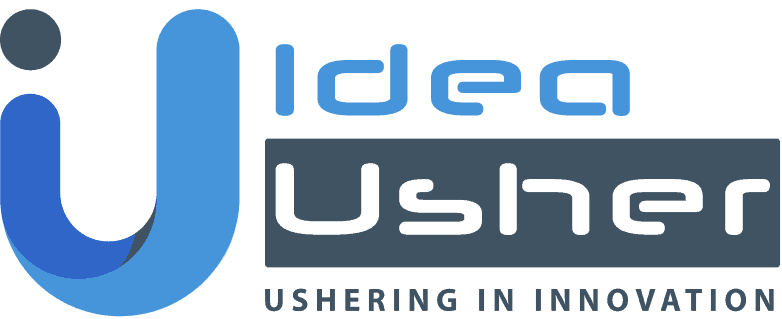


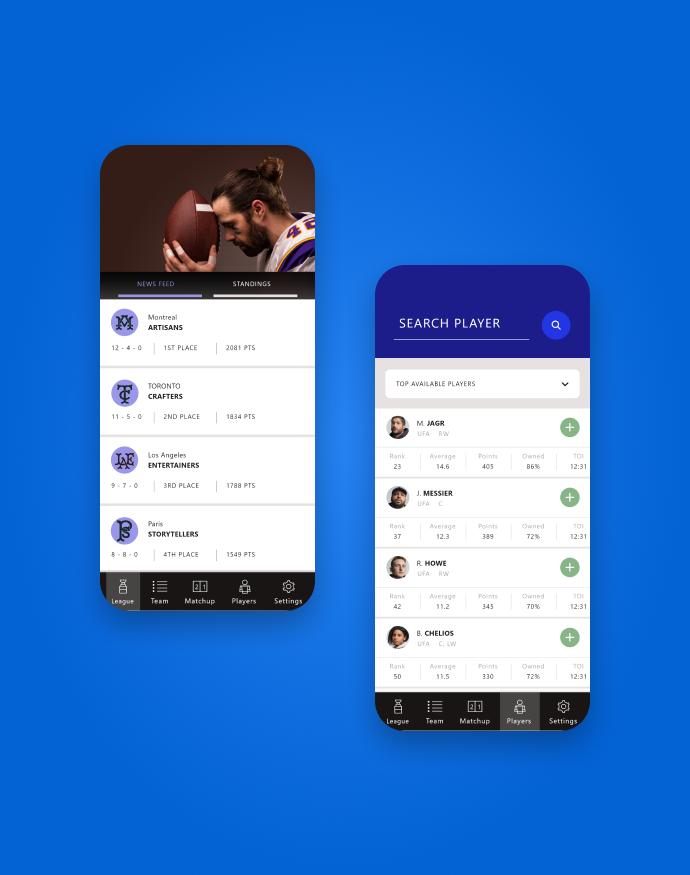
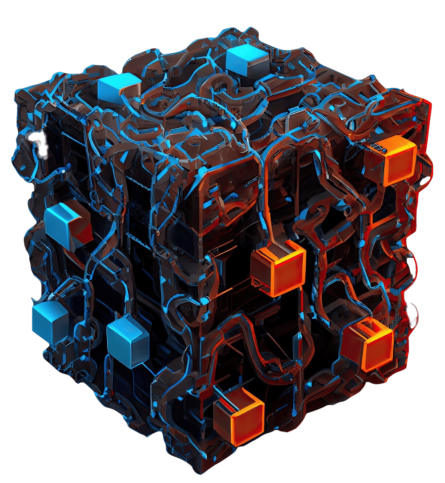

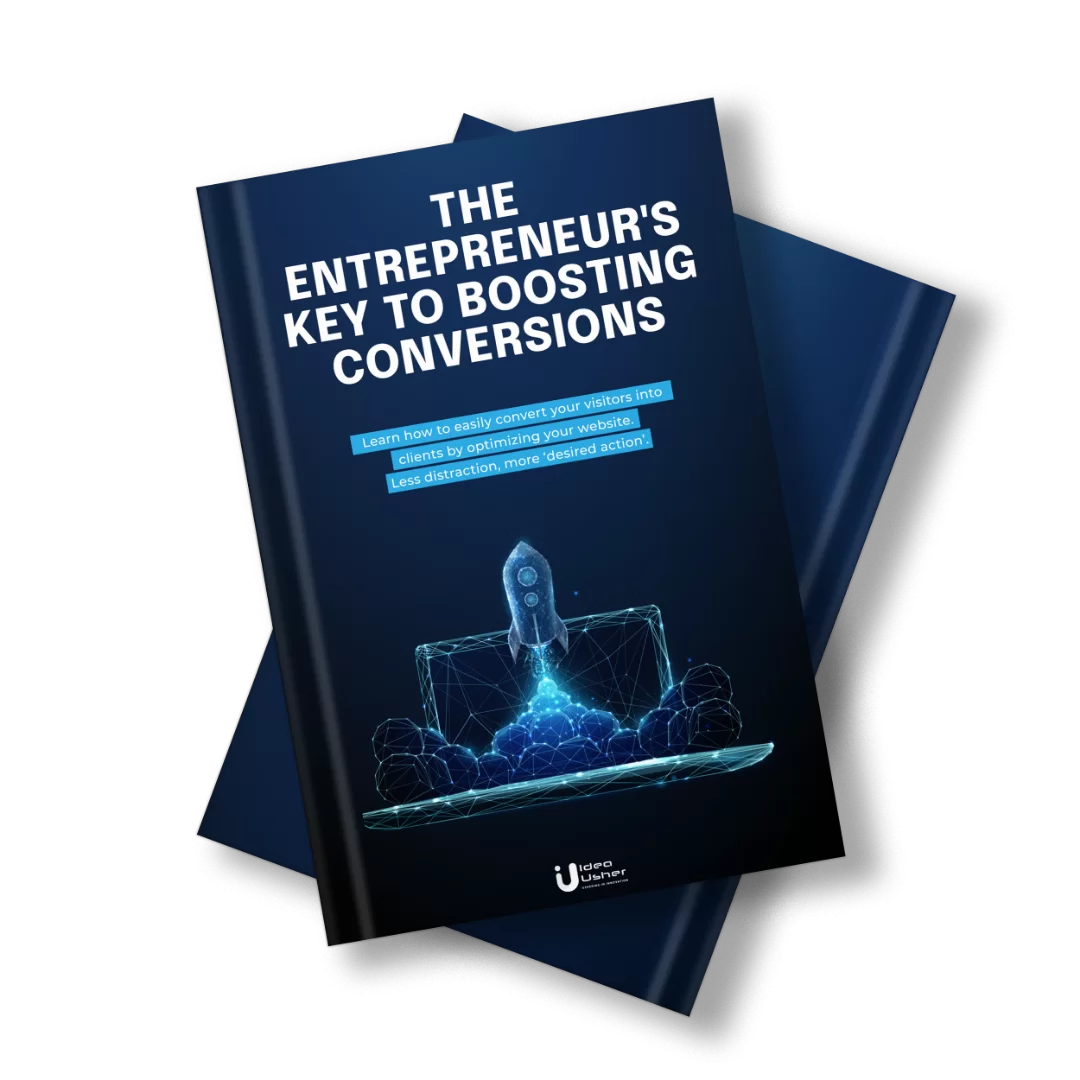
Yuvraj Singh